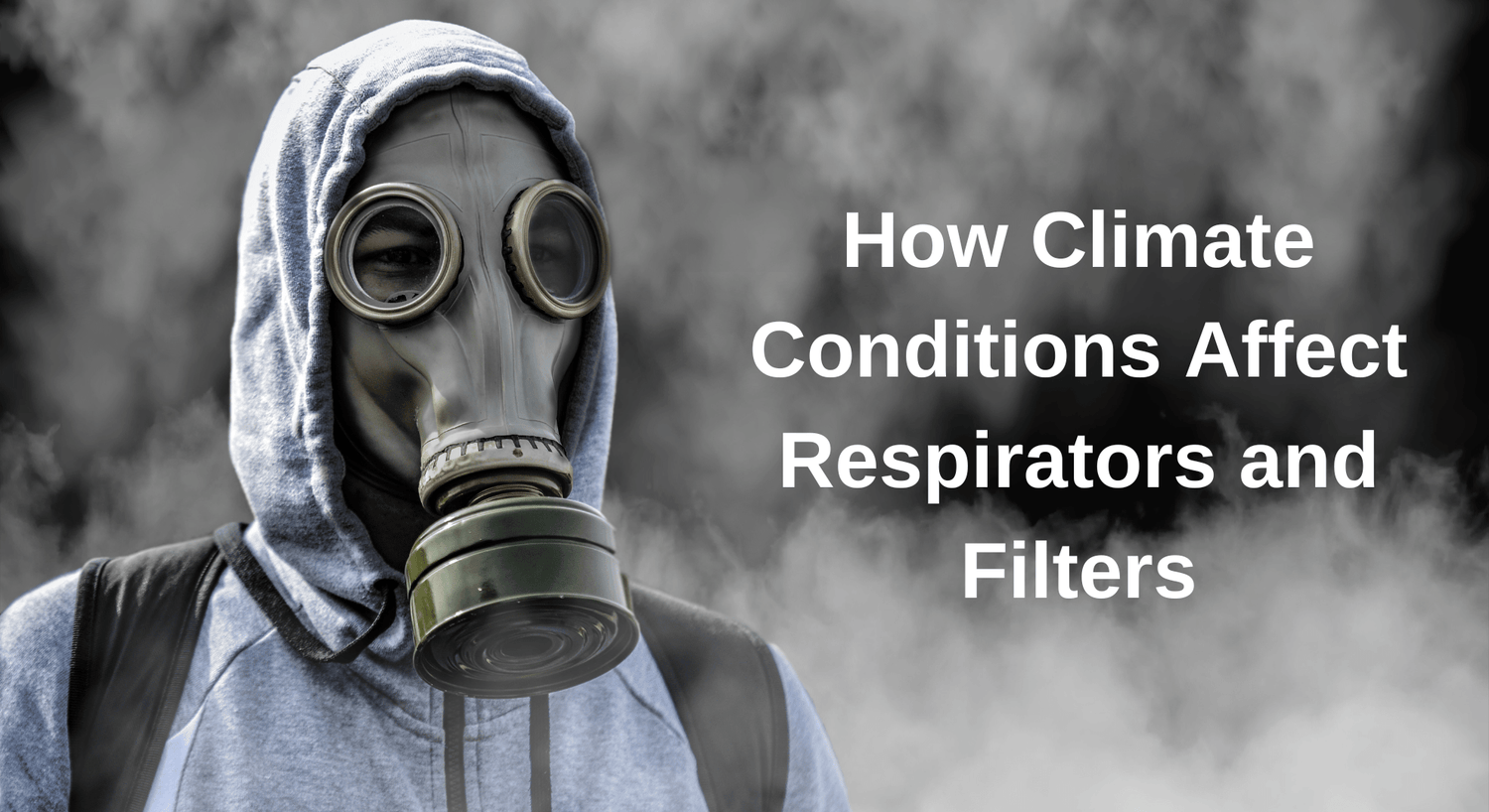Did you know that climate plays a crucial role in respirator effectiveness? Many people would assume that respirator masks will remain effective in any environment regardless of the humidity or temperature of its climate. This assumption is false.
The reality is that climate conditions drastically affect how well respirators can filter out contaminants and protect your respiratory system. If you don’t understand the impact of humidity, cold, and heat on a respirator’s performance, it could significantly reduce its filtration efficiency when needed.
Here is an overview of the top five most common climate conditions and environmental impacts on respirator use and filter lifespan.
1) Humidity
Environments with high humidity levels contain excessive water vapor in the air. If you use a respirator in such a climate, the excess moisture will quickly saturate and clog your air filters. Then, you will have difficulty breathing because the clogged filters will not let much air through.
You should also be aware that activated carbon filters lose their filtration efficiency relatively fast when exposed to water molecules from the moisture in the air. So, if you must wear a mask in a moist environment, consider using another type of filter with your respirator, such as a particulate filter.
Too much dry air in low-humidity environments also has complications. It can cause your respirator's rubber or silicone seals to dry out until they eventually crack. You cannot correctly fit the respirator onto your face without a strong seal. The best way to avoid this problem is to reduce your time wearing the respirator in these dry environments.
2) Extreme Heat
Wearing your respirator in environments with hot temperatures and extreme heat can degrade its filter materials and impact the mask’s seal. The constant exposure to excessive heat will cause the seal’s elastomeric components to degrade, adversely affecting how well the mask fits over your face to protect you from leaks.
As for the filters, they will become less efficient at blocking out contaminants the longer they are exposed to heat. Activated carbon filters will lose their adsorptive capacity due to the material's degradation and the fact that gas molecules are more robust in hot temperatures and less likely to stay bound to the filter. Particulate filters won’t be able to trap particles for as long, either.
3) Cold Weather
Cold and low temperatures can cause many problems for your respirator. The cold creates dry air that stiffens the seal material and degrades the filters. Ice might even cover the intake or exhalation valves if the temperatures are freezing, restricting the airflow through them.
Another thing to watch for in cold water is condensation on your respirator mask. Condensation forms when humid air touches a cold surface, which means water droplets will get onto your seal material and filters. You could try wiping away the water from your mask, but it won’t be sufficient to prevent its potential consequences.
For instance, when you wear your respirator under these conditions, you may feel more discomfort because the seal may slip or feel less tight. You may also spend more time attempting to readjust your mask, putting yourself at risk. If these conditions continue, the seal will ultimately fail, causing gaps and leaks to form.
4) Storage Conditions
Most people won’t spend all day wearing their respirator mask in a cold, humid, or hot environment unless they are military soldiers in a warzone. For everyone else, they may wear their respirators for a short duration and then store them away along with their filters.
Remember that your storage space's temperature and humidity levels are as vital as those in the environment where you wore the respirator. Filters stored in humid or hot areas will lose their filtration efficiency faster. You should also keep them out of direct sunlight or any place without ventilation.
We recommend covering your respirators and filters and storing them in a cool, dry place, such as a cabinet or drawer. Before storing them, make sure they are clean. Moreover, ensure they are not near any chemicals or other contaminated areas because you’ll want them to remain clean while in storage.
5) High Altitude
Are you using a respirator and filter in a high-altitude environment? The lower air pressure makes breathing more difficult, primarily through the filter of a respirator mask. You are more likely to develop fatigue and lightheadedness if you breathe through the filter for too long in such environments.
If the threat level from the environment is not too severe, consider choosing a respirator mask with a lighter filter to reduce breathing restrictions. You can also use a respirator with a self-contained breathing apparatus or a separate air supply to compensate for the lack of oxygen in the environment.
High altitudes tend to affect the filtration efficiency of respirators and filters. After all, the effectiveness of filtration depends on the continuation of air passing through the filters. In low-pressure environments, less air passes through the filter. If toxic particles are in the air, they are less likely to bind to the filter material.
Best Masks to Wear in Extreme Environments
If you plan to frequently enter hazardous environments with extreme heat, cold, or humidity, you will need the best respirator mask possible for maximum protection. Look for a tactical or industrial-grade respirator with anti-fog and impact resistance technology, as these are the most suitable for cold and hot weather environments. One example is the PD-101 full-face respirator, which offers superior protection in the harshest conditions.
Find Quality Respirators and Filters for Various Climates
Acquire high-quality respirators and filters that can withstand extreme climate conditions to protect yourself. Parcil Safety offers premium-grade respirators and filters that provide maximum protection in cold, hot, and humid environments. The respirators are sturdy, lightweight, and easily adjustable for comfort and tightness.




















Leave a comment
All comments are moderated before being published.
This site is protected by hCaptcha and the hCaptcha Privacy Policy and Terms of Service apply.